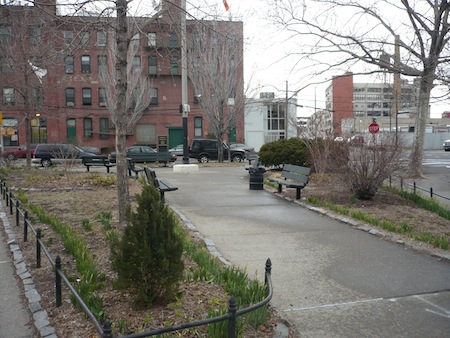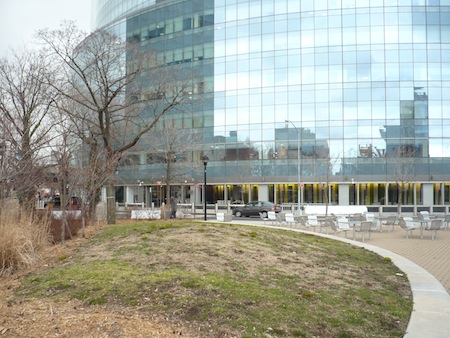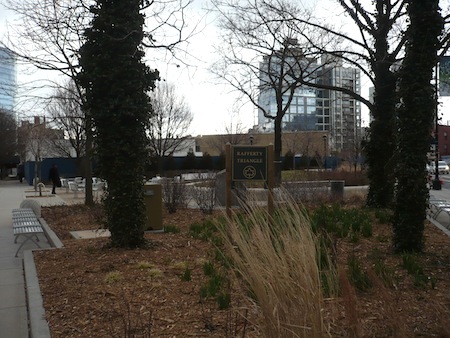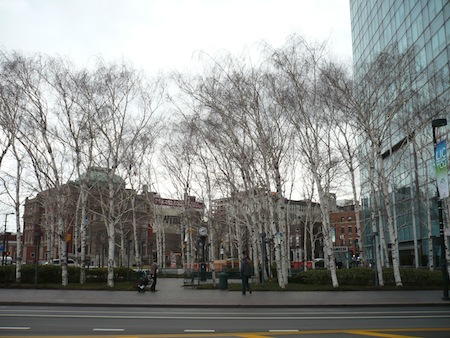I loved going to the Brooklyn Botanic Garden when I lived in that borough. I went for cherry blossom season, for the chili pepper festival, for special exhibits. I still love the place, but hadn't been there in some years when I paid a recent visit on a cloudy day, before the cherry blossoms, but on one of the spring's first nice weekends.
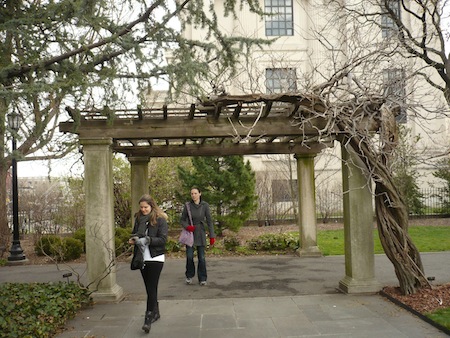
The place seemed smaller than I remembered, and I covered just about the entire grounds in a determined walkabout of something over an hour. The fact that the cherry blossoms hadn't yet appeared didn't mean there weren't beautiful colors to appreciate:
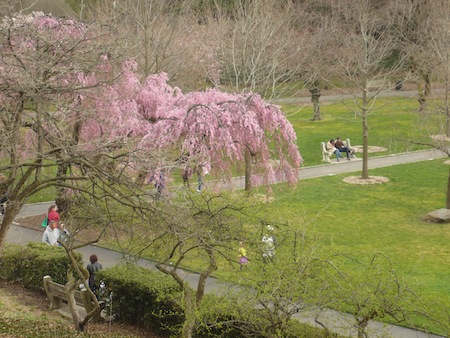
And plenty of green.
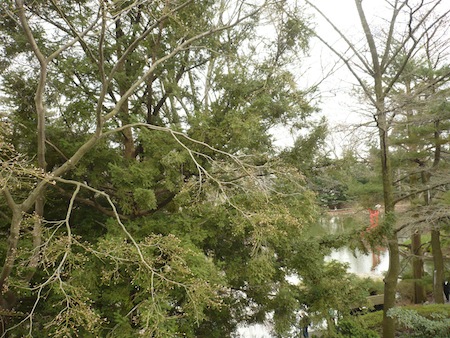
In the above photo you get a glimpse of the water and, to the right, you can just make out the red archway of the Torii (gateway) in the Japanese Hill-and-Pond Garden. This is the first Japanese garden I remember ever seeing, and even though I've now seen other nice ones, I can still sense a certain magic here. Is it the shimmering water? The fish? The lovers?
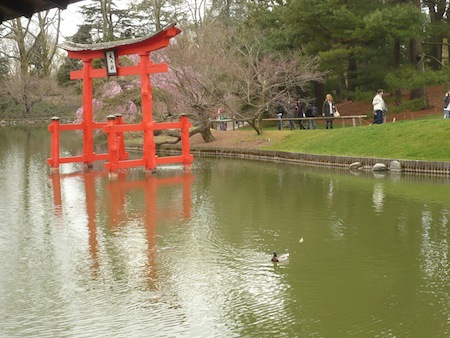
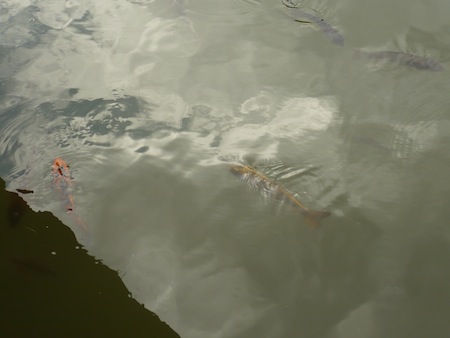
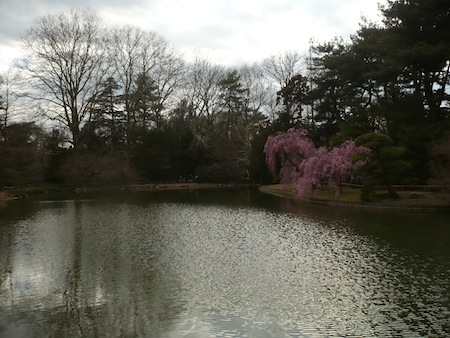
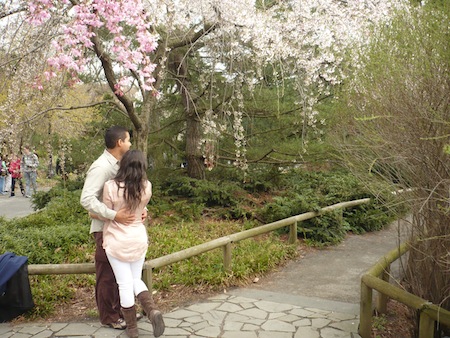
The Shakespeare Garden grows flora mentioned in the works of the bard.
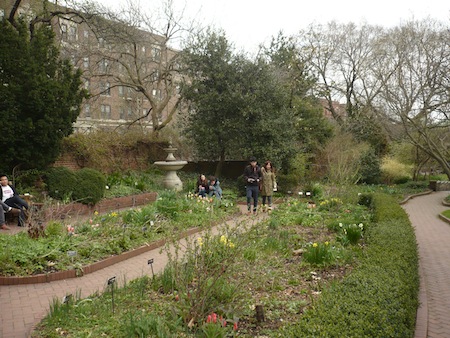
There's something to be said for a time when only a few trees have flowered. They catch your eye individually and you can appreciate them that way.
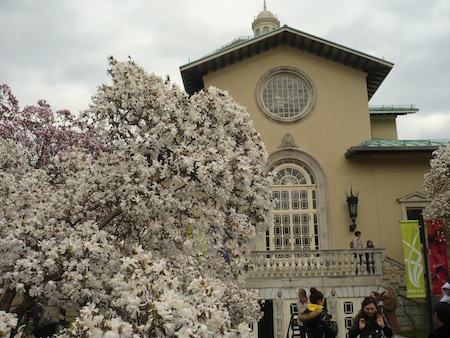
Of course, there's the glassy conservatory. This is a botanic garden after all.
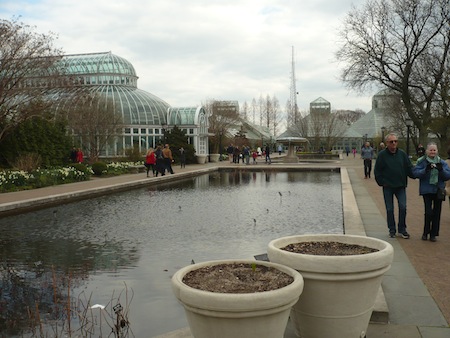
I go up to the trees and I look at the little placards stating what they're called. I look, and I forget. This one is called a "tree":
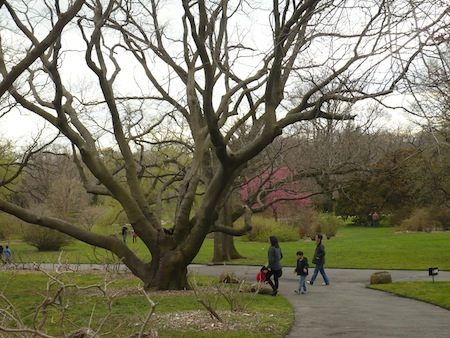
But sometimes I take a photo of a sign so I can later identify the tree in the picture. Half the people you meet in New York came from somewhere else; this gorgeous tree is a Wisconsin weeping willow.

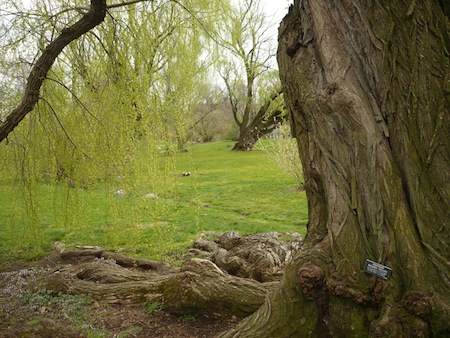
Botanica aficianados come from miles around to check their email in the Rock Garden.
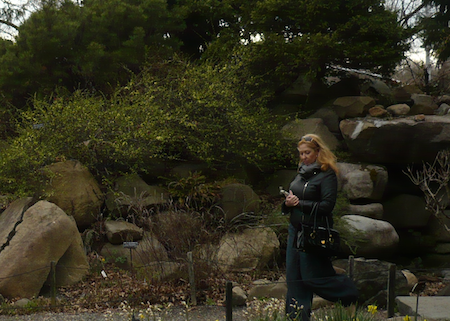
"Poisonous if eaten." Not everything here is thoroughly benign.
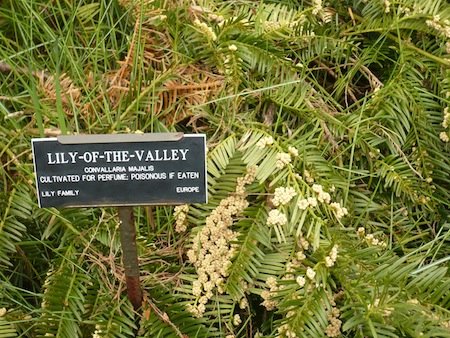
And come to think of it, this Oriental Ash tree looks as if it could pick you up and squash you. Like something out of the murky forests of Oz.
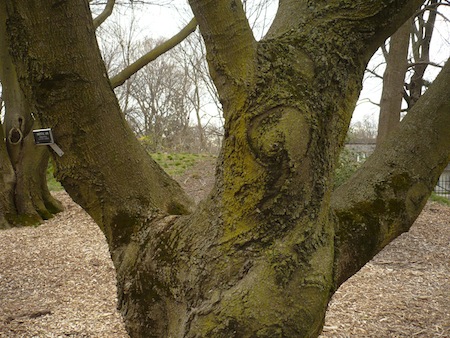
And I like spiders, but this giant one might strike fear into the heart of an impressionable young primate even if it really is just an overgrown planter.
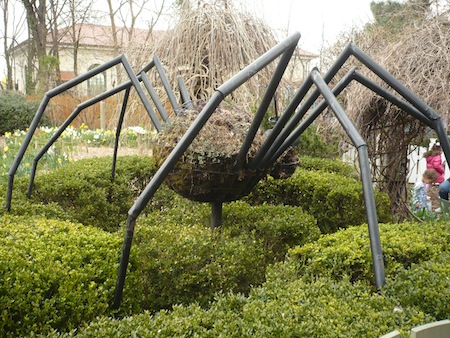
There are trees here with so much character, it feels like they belong on stage. Maybe in the Shakespeare Garden.
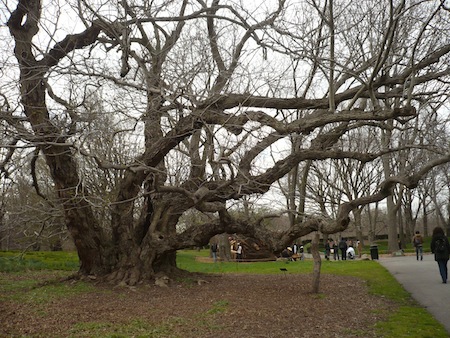
I finished my circuit and arrived back near the visitors' center and this pink-blooming tree, which now had a little girl perched in it. Shortly afterward, a security man came by and made her get down.
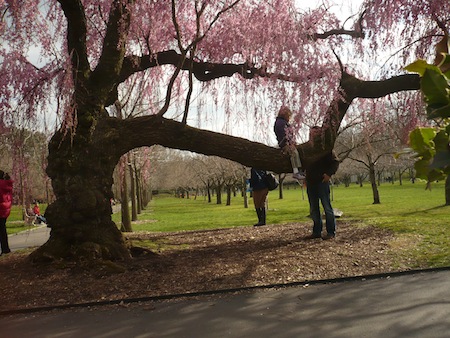
And I paid a closing visit to the Native Flora Garden, where from certain angles you could almost be in an original wilderness. Except for the explanatory placards, of course.
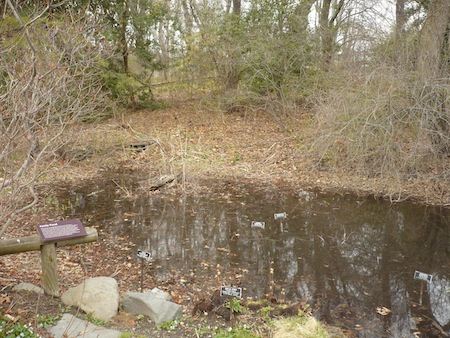
On my way out these flowers caught my eye:

And I spotted something I had never noticed before: an aging sign paying tribute to the Brooklyn Botanic Garden's precursor, an early botanic garden founded in 1825 by Belgian-born Brooklynite Andre Parmentier in a nearby neighborhood. What's at Carlton Street south of Atlantic Avenue now? Train yards and part of the Atlantic Yards development grounds. If that garden was still here, it would be right next door to the Barclays Center. And where better to leave you, as we conclude our tour of the Brooklyn Botanic Garden?

(Hey, only two months until the NBA Draft.)
 I only just realized this park by the Hudson River, just north of Chelsea Piers, had its own identity and wasn't simply part of Hudson River Park. Shows you how much I know. And I live half a block from Chelsea.
I only just realized this park by the Hudson River, just north of Chelsea Piers, had its own identity and wasn't simply part of Hudson River Park. Shows you how much I know. And I live half a block from Chelsea.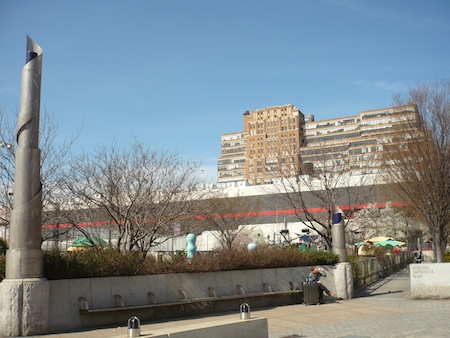
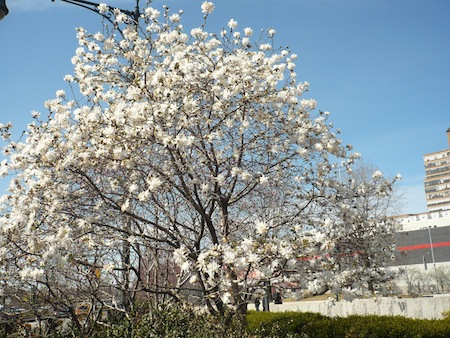
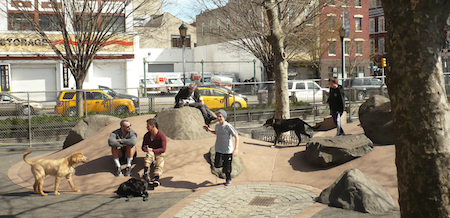
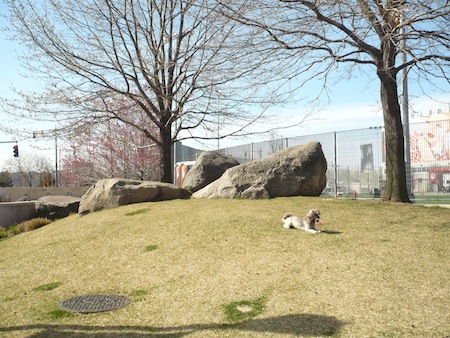

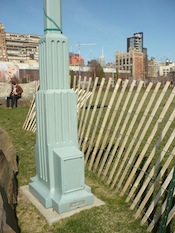






















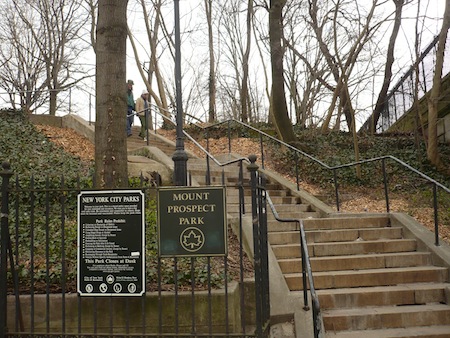
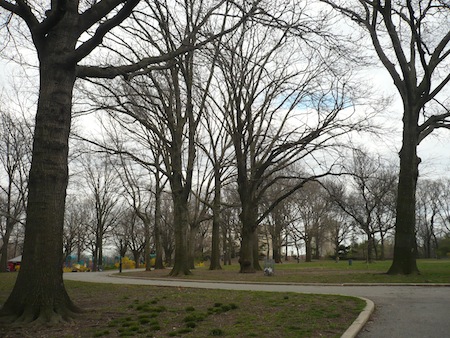
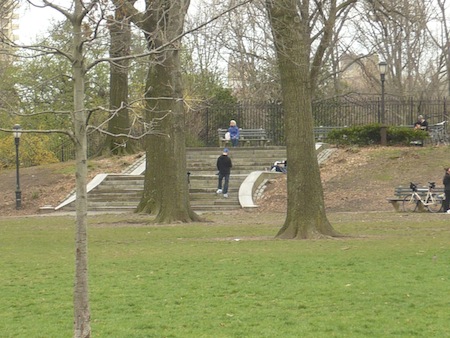
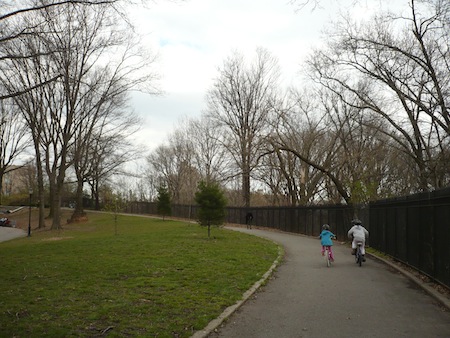
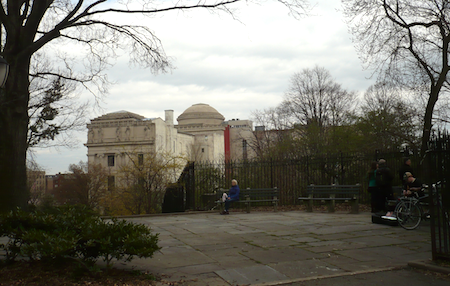
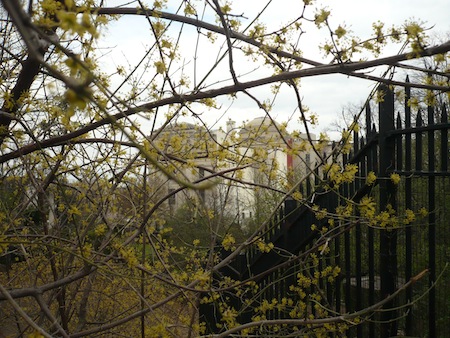
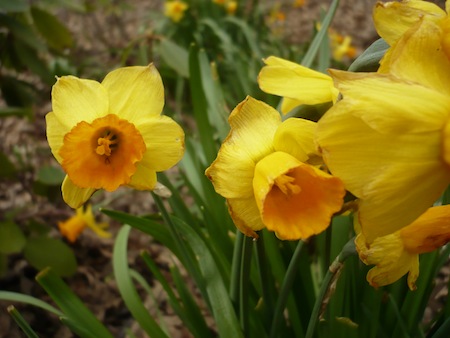
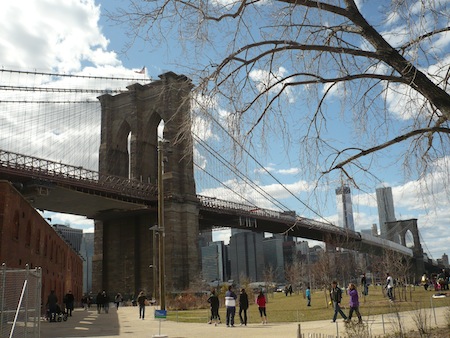
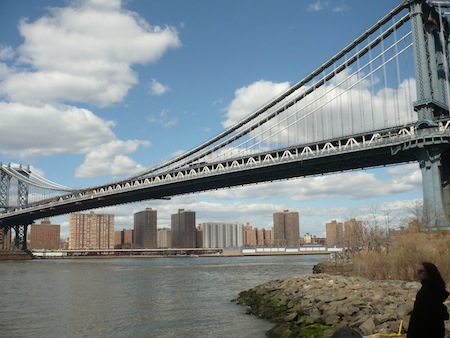

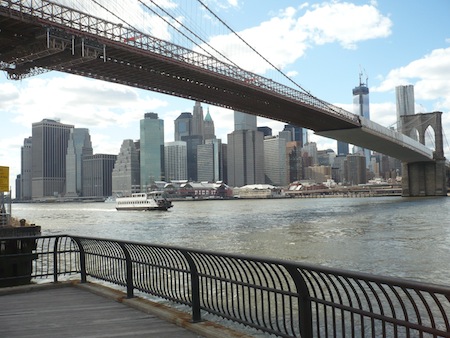

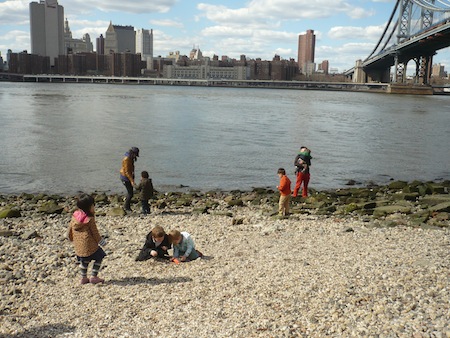
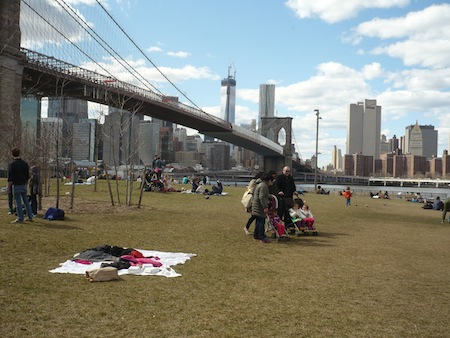
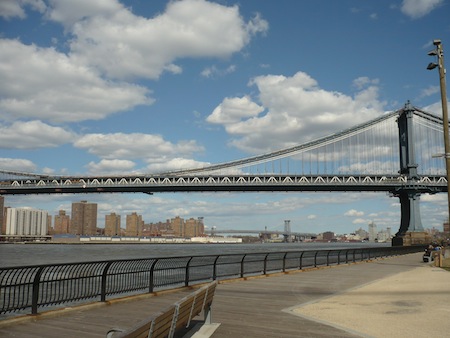
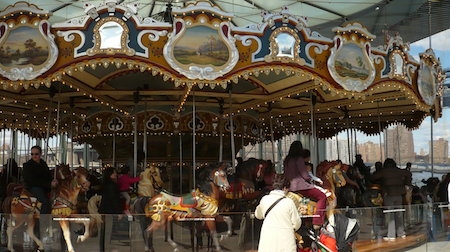
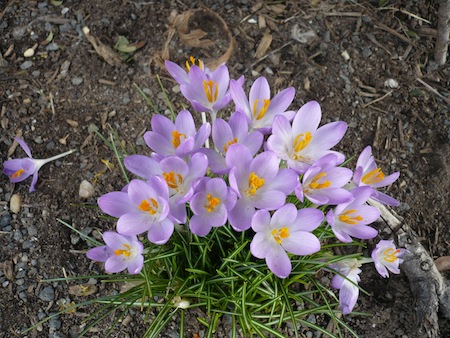
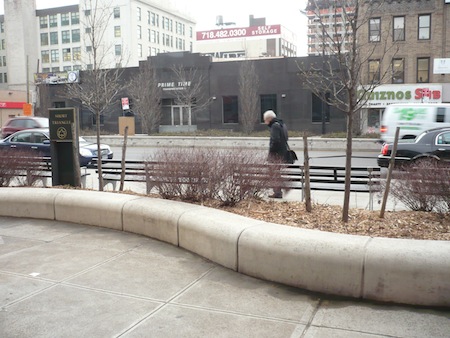
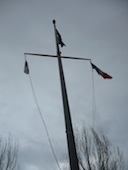 If a space alien arrived and did nothing but visit New York City parks, he or she would probably conclude there had been just one great war on this planet, called the Great War – that's how many parks are named for or feature statues honoring specific soldiers or the Doughboys in general.
If a space alien arrived and did nothing but visit New York City parks, he or she would probably conclude there had been just one great war on this planet, called the Great War – that's how many parks are named for or feature statues honoring specific soldiers or the Doughboys in general.